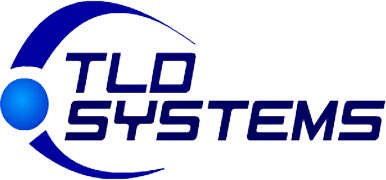- Helping you with HIPAA Security Solutions.
CPT
Coding
Removal of Subtalar Arthroereisis Implant
“I have an adult patient who suffered from posterior tibial tendon dysfunction. A local surgeon addressed this by placing a subtalar joint arthroereisis implant. This had a very positive effect on the structure of the foot and reducing the symptoms at the posterior tibial tendon. Unfortunately, 5 months after the procedure, she is now having symptoms at the subtalar joint and would like the implant removed. There has been no movement of the implant and no breakage of the implant. With the 2022 CPT changes, does the removal of this implant count as an “implant” or “foreign body?”
Read More
Coding
Challenges with CPT 97597
“We suddenly started getting denials the fourth quarter of last year for a handful of Blue Cross Blue Shield and United Health Care plans for CPT 97597. After a little investigation, the code seems to be tied to physical therapy and is triggering the denials. Is there a modifier that we are failing to use? Has anyone else seen this problem?”
Read More
Coding
Problems with a Paronychia and Granuloma
“I saw a patient with a history of chronic onychocryptosis. On this date of service, he presented with a red, swollen, tender right great toe. I performed an E/M and diagnosed paronychia L03.031 for which I took a culture for a gram stain and culture and sensitivity. I discussed the problem with the patient, prescribed an oral antibiotic and gave him instructions. I billed CPT 99213-25 for this. During the same visit, I addressed hypergranulation tissue L92.9 of the same toe. I treated it by excising the tissue and cauterizing the area with silver nitrate. I billed CPT 17250. I was told that HMO Blue of Massachusetts retracted the office visit due to an audit and that there are no appeal rights. Insurance states that “there are no other issues managed and treated aside from the procedure. Therefore the documentation does not support a separate E&M level of service.” I would appreciate any insights you have on this situation, especially when I am informed that I have no appeal rights.”
Read More
Coding
E/M Coding Psychiatric Facility
“What is the E/M code series that would be considered for an initial visit when seeing a patient in an inpatient, psychiatric facility (POS 56)? Would it be a home code CPT 99341 or 99347?”
Read More
Coding
Excision Gout Tophus
“The patient is a 47 year old with a soft tissue mass over the distal fibula. It appears to be a gouty tophus and x-rays show no bone involvement. What would be the proper code for surgical debridement/excision of this mass?”
Read More
Coding
Diagnosis of Primus Varus Versus Hallux Valgus
”We’re having a debate on coding for the diagnosis of primus varus versus the diagnosis of hallux valgus. When measuring angles, most patients have both a first intermetatarsal angle greater than 9 degrees (for primus varus) and a hallux abducto valgus angle greater than 15 degrees (for hallux valgus). Would we bill for both diagnosis codes? These are the diagnosis codes we use when billing our Lapidus bunionectomies.”
Read More
Coding
Injections and Ultrasound
“We have been finding that, just recently, United Healthcare has a problem with the combination of CPT 64450 and CPT 76942. They are paying the CPT 76942. We have appealed with medical records and CPT 64450 still being denied. We have resubmitted with a 59 and are waiting on response. Is anyone else experiencing the bundling of these two codes?”
Read More
Coding
Bunion Confusion
“We have a debate in my group about coding for a combination of bunion procedures. I performed an Akin bunionectomy and a Mcbride bunionectomy on the same foot. Are these procedures to billed separately or should I use CPT 28299?”
Read More
Coding
Inappropriate Use of a Modifier with Bunionectomies
“I have recently done bunionectomies on two separate patients with Anthem and received denials. One was a combination of an Austin procedure and an Akin procedure. I billed CPT 28299 -RT. On another patient, I did an Austin procedure and I billed CPT 28296 -RT. Both claims were denied for “inappropriate use of modifier.” I have called the customer service twice and even sent a corrected claim and removed the modifier but claim was still denied. Has something changed with Anthem that I don’t know about?”
Read More
Coding
ROUTINE FOOTCARE
“I have a patient who honestly only has three mycotic/dystrophic toenails. This elderly gentleman, with Medicare, returns to the office every 90 days for routine foot care (RFC). According to Medicare guidelines, he does qualify for RFC with his physical examine findings. My question is can I bill CPT 11720 for the debridement of the three dystrophic nails and then CPT 11719 for the trimming of the other seven non-dystrophic toenails?”
Read More

